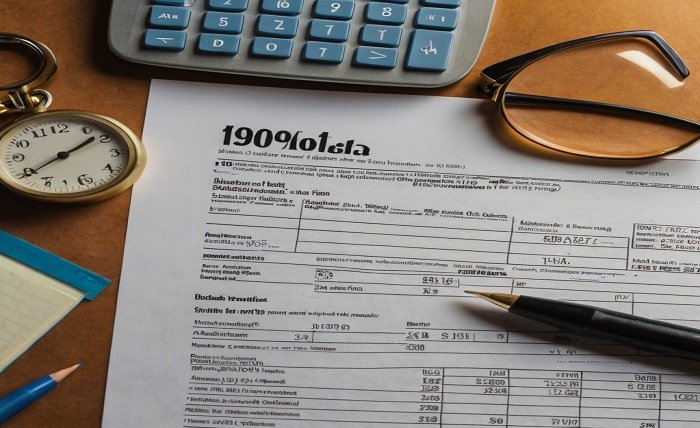To minimize their tax obligations, business owners are now heavily considering Section 199A distributions. The Tax Cuts and Jobs Act of 2017 included Section 199A, allowing pass-through entities to deduct up to 20% of their qualifying business income (QBI). Comprehending the nuances of Section 199A dividends is crucial to optimizing tax advantages and guaranteeing adherence to IRS guidelines.
What Are Section 199A Dividends?

Section 199A dividends are the tax deductions for eligible business income from pass-through organizations, such as partnerships, S corporations, sole proprietorships, and certain trusts and estates. Section 199A’s principal goal is to give small and medium-sized enterprises tax relief so they can keep a larger portion of their profits for expansion and reinvestment. The taxable income of qualified business owners is decreased by the 20% deduction, which applies to QBI.
Eligibility Criteria for Section 199A Dividends
Business income must meet certain requirements to qualify for Section 199A dividends. The revenue should be considered QBI, and the company must be a pass-through corporation. The QBI includes the net amount of qualifying items such as income, gain, deduction, and loss from any eligible trade or business. Nonetheless, not all forms of income are eligible. For instance, the deduction typically excludes interest income, dividends, and capital gains. Furthermore, depending on the type of business and the taxpayer’s overall income, there are income thresholds and restrictions that apply to the deduction.
Calculating Section 199A Dividends
We calculate dividends under Section 199A in a few steps. First, ascertain the taxable year’s QBI. This entails deducting business-related expenses such as salary and perks. After establishing QBI, the next step involves computing the potential deduction, typically 20% of QBI. However, some variables, including the taxpayer’s total taxable income, the nature of the firm, W-2 salary limitations, and capital limitations, can put a cap on this amount. A precise computation guarantees the highest possible use of the Section 199A dividends.
Income Thresholds and Limitations
Certain income levels apply to Section 199A dividends, which affect both eligibility and the amount of the deduction. The barrier is $182,100 for individuals filing alone and $364,200 for those filing jointly for 2024. Over these limits, taxpayers may be subject to phase-outs and extra restrictions, especially in the case of specified service trades or companies (SSTBs) such as consulting, legal, and healthcare. If an SSTB exceeds the threshold, they could only get a little discount or none at all. It is essential to comprehend these levels to plan taxes effectively.
Strategies to Maximize Section 199A Dividends
There are various tactics that business owners might use to optimize their Section 199A profits. Keeping taxable income levels below the relevant limits is one strategy. Contributions to retirement plans, health savings accounts, and other deductible costs can help achieve this. Another tactic is to make sure that employees receive enough W-2 salaries, as this can restrict the amount of the deduction. Furthermore, the possible deduction may vary depending on whether the business is organized as a sole proprietorship, partnership, or S corporation.
Impact on Different Business Structures
Dividends under Section 199A have different effects depending on the type of business. If a sole proprietorship or partnership satisfies the income thresholds and QBI standards, they can have an easier time being eligible for the deduction. S businesses stand to gain as well, but they must strike a balance between optimizing QBI and paying shareholders a fair wage. The deduction is available to trusts and estates, but they have to fulfill certain requirements and divide revenue appropriately. Knowing how Section 199A dividends work with various arrangements is essential to maximizing tax advantages.
Common Mistakes and Pitfalls
Even though Section 199A distributions have significant tax advantages, taxpayers should be careful to avoid several typical pitfalls. Misclassifying revenue can result in inaccurate QBI calculations, which is a common issue. Not paying enough W-2 wages is another trap that can reduce or even eliminate the deduction. Owners of enterprises should also exercise caution when it comes to aggregation requirements, which permit the consolidation of several companies for Section 199A purposes but necessitate meticulous compliance and documentation. Taxpayers can receive the full benefit of Section 199A dividends if certain errors are avoided.
Conclusion
Dividends under Section 199A offer business owners a significant tax benefit, allowing them to keep more of their revenue for expansion and investment. Taxpayers can efficiently use Section 199A dividends to lower their tax obligations by being aware of the qualifying requirements, computation techniques, and tactics to optimize the deduction. Maintaining awareness of income thresholds, implications for business structures, and typical mistakes can guarantee compliance and maximize tax savings.
FAQ
Which forms of income are eligible for dividends under Section 199A?
Net income from a trade or business, less capital gains, dividends, and interest income, is referred to as qualified business income (QBI).
How are specified service trades or companies (SSTBs) affected by Section 199A?
Additional restrictions and phase-outs for SSTBs are dependent on income thresholds, which may result in a reduction or elimination of the Section 199A deduction.
Does income from rentals qualify for dividends under Section 199A?
If rental income is received in conjunction with a trade or business and satisfies other QBI standards, then it may qualify.
In what way do Section 199A payouts depend on W-2 wages?
Payroll management is crucial because the quantity of W-2 wages that the company pays may limit the Section 199A deduction.
Are there any particular guidelines for Section 199A distributions that apply to trusts and estates?
Yes, trusts and estates are eligible for the deduction; however, to receive Section 199A dividends, they must fulfill certain requirements and allocate revenue correctly.

